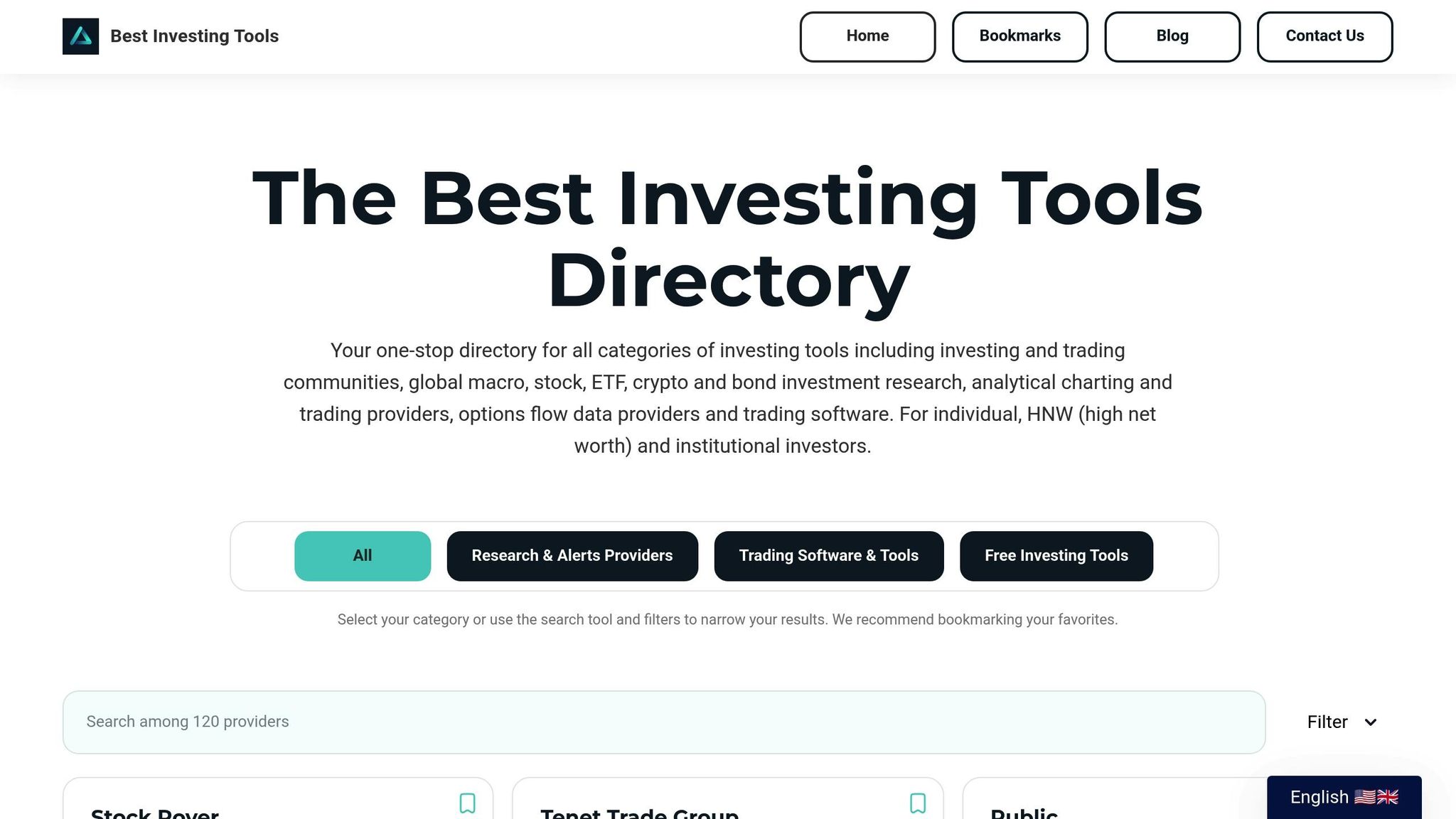Fund flow data reveals where investors are putting their money, acting as a real-time sentiment indicator for markets. By tracking cash movements into and out of mutual funds and ETFs, it provides insights into investor confidence, market trends, and potential shifts in sectors or regions. For example, global ETFs saw record inflows of $1.5 trillion in 2024, highlighting growing demand for low-cost investments.
Key Takeaways:
- What it is: Tracks net cash inflows (investments) and outflows (redemptions) in funds.
- Why it matters: Reflects investor sentiment; institutional inflows are often seen as "smart money."
- How to use it: Analyze trends by sector, geography, and investor type for buy/sell signals.
- Limitations: It’s a lagging indicator and can be distorted by routine portfolio rebalancing.
Fund flow data is most effective when combined with other tools like technical analysis and economic indicators to build a well-rounded market view.
Fund Flows | The Big Explainer | Refinitiv

Common Investment Problems Fund Flow Data Can Solve
Investors often face tough decisions that directly affect their portfolios. Fund flow data has emerged as a valuable tool, providing insights that conventional analysis might miss.
Problems Investors Face in Market Analysis
One of the biggest hurdles is market timing. Deciding when to buy or sell can feel like navigating in the dark. Many investors fall into the trap of buying at market highs and selling during downturns.
Another challenge is spotting sector rotation. Traditional fundamental analysis tends to lag behind, making it difficult to catch shifts in investor preferences before they’re fully underway.
Separating noise from meaningful trends is equally tricky. Markets are full of daily volatility, which can mask genuine, longer-term changes in sentiment.
Understanding institutional behavior adds yet another layer of complexity. Individual investors often struggle to see where institutional "smart money" is flowing, missing critical signals about market confidence. It’s worth noting that about half of asset managers cite compliance and regulatory pressures as significant challenges, which can influence their timing and allocation decisions.
How Fund Flow Data Provides Solutions
Fund flow analysis goes beyond traditional metrics by showing where institutions and portfolio managers are moving their capital.
For market timing, fund flow data can reveal how quickly money is moving, offering clues about potential market turning points.
When it comes to sector trends, steady increases in fund flows into a specific sector can hint at the start of a growth cycle. Sudden changes, on the other hand, might signal short-term trading activity.
To filter out noise, concentration ratios can be helpful. A high concentration in a particular asset class might suggest a bubble, while low concentration could point to undervalued opportunities.
Geographic fund flow analysis adds another layer of insight by highlighting regions where investors see value, which can uncover local opportunities or risks.
That said, these benefits come with certain limitations.
Limits of Fund Flow Data
Despite its strengths, fund flow data isn’t perfect. One major drawback is that it’s a lagging indicator, reflecting past decisions rather than predicting future trends.
The accuracy of the data can also be a concern. If the underlying information is flawed, the insights and predictions based on it will be unreliable [4, 14].
Rebalancing distortions are another issue. Routine portfolio adjustments by fund managers can appear as significant inflows or outflows, even when they don’t reflect real shifts in investor sentiment.
Short-term randomness can further complicate things. Retail investors, in particular, are often driven by sentiment, making it harder to identify meaningful trends in the data.
Lastly, the differences in investor behavior add complexity. Institutional investors typically use quantitative methods, such as analyzing risk-adjusted returns, while retail investors may rely more on emotions.
To address these challenges, fund flow analysis should be just one part of a broader strategy. Combining it with other tools - like stop-loss triggers, short covering, and option expiry data - can provide a more balanced market view. Most importantly, fund flow data should complement, not replace, other technical and qualitative indicators [4, 15].
How to Use Fund Flow Data to Predict Market Trends
Fund flow data can be a powerful tool for sharpening market predictions. By identifying patterns and pairing them with other market signals, you can gain a clearer understanding of potential trends. Let’s dive into how shifts across asset classes can reveal these signals.
Signals from Asset Class Changes
Equity vs. fixed-income flows often provide some of the clearest market insights. For instance, when investors move from stocks to bonds, it typically signals caution, while the reverse - flows from bonds to stocks - indicates growing confidence.
Take April 2025 as an example: taxable-bond funds saw their largest outflow since March 2020, with $43 billion in redemptions. At the same time, U.S. equity funds experienced declines, and money market funds reached a record $8.9 trillion in assets.
Sector-specific flows add another layer of detail. For example, consistent inflows into technology funds during economic downturns may reflect institutional confidence in the tech sector. On the flip side, a sudden outflow from a previously favored sector could signal a shift in market sentiment.
Geographic flows offer insights into global investment trends. By examining fund flows by region, you can identify differences in investor behavior across countries. For instance, if European investors are pulling money from U.S. equity funds while Asian investors are increasing their allocations, it could hint at contrasting economic outlooks between regions.
The active vs. passive debate also tells a story. Over the last decade, exchange-traded funds (ETFs) have attracted $7.4 trillion, while traditional open-end funds have only seen $128 billion in inflows. This trend reflects a shift in how investors perceive market efficiency and the value of active management.
Research on Fund Flow Predictions
Academic studies reveal that machine learning models outperform traditional linear models in predicting market trends using fund flow data. One key takeaway is that institutional inflows are often seen as a positive indicator, whereas retail inflows are approached with more caution. This creates opportunities for contrarian strategies when retail and institutional behaviors diverge.
Timing is critical when analyzing fund flows. Research suggests that flows are most predictive during periods of market stress, when emotional decision-making often drives extreme capital movements. During calmer periods, flows tend to be more routine and less predictive of future trends.
Small-cap fund flows also deserve attention. Significant inflows into small-cap funds can sometimes hurt performance, especially in less liquid markets.
The rise of sustainable investing provides a recent example of how fund flows can highlight broader market themes. In the first quarter of 2025, global sustainable funds saw record-high outflows, with investors withdrawing approximately $8.6 billion.
These findings underscore how fund flow data can guide actionable investment strategies.
How to Read Fund Flow Data for Better Decisions
To make the most of fund flow data, combine multiple approaches for a comprehensive analysis:
- Analyze across multiple timeframes. Weekly data can reveal short-term shifts in sentiment, while monthly or quarterly data helps uncover longer-term trends. For instance, a sudden weekly spike in outflows might just be noise, but consistent monthly outflows could signal a real trend.
- Spot divergences between flows and performance. If a fund category is performing well but experiencing outflows, it might mean investors are taking profits or losing confidence in the trend. Conversely, inflows during poor performance could indicate that some investors see overlooked value.
-
Understand the context behind flows. As Morningstar puts it:
Fund flows offer a wide-angle view of how investors respond to market conditions.
Knowing whether flows are driven by fundamental analysis, technical signals, or emotional reactions can provide deeper insights. - Use concentration ratios to identify risks or opportunities. When flows are heavily concentrated in specific sectors or asset classes, it could signal either a bubble or a major structural shift in the economy. Distinguishing between the two is crucial.
- Pay attention to the speed of flows. Gradual, steady flows often reflect deliberate reallocation, while sudden, massive shifts may indicate emotional or forced selling. Outflows during market stress can sometimes open doors for patient investors.
- Cross-reference with other indicators. Fund flow data is most effective when paired with technical analysis, earnings trends, and macroeconomic indicators. For example, if defensive sector inflows rise while economic indicators remain strong, it might suggest that institutions are preparing for risks not yet apparent to the broader market.
For those looking to integrate fund flow analysis into their investment strategies, tools like those reviewed on The Best Investing Tools Directory offer detailed insights and resources to enhance your decision-making process.
sbb-itb-2e26d5a
Tools and Resources for Fund Flow Analysis
Turning raw fund flow data into actionable insights requires the right tools. Here's a closer look at some of the most effective options available today.
Top Tools for Analyzing Fund Flows
ETF.com's ETF Fund Flows Tool is a straightforward way to track ETF movements. It offers daily, weekly, and monthly ETF flow data alongside league tables ranking funds by performance metrics. For instance, on July 7, 2025, the tool highlighted that SMH brought in $605 million, Vanguard gained $3.1 billion, while SPDR experienced outflows. The platform’s real-time updates make it easier for investors to interpret data efficiently.
Morningstar Direct delivers a deep dive into asset flow data, with records going back to 2008. This institutional-level platform includes forecasting models for future growth and breaks data down by asset class, style, region, investor type, and fund families. Its extensive historical data is particularly helpful for spotting long-term trends that might be missed in shorter analyses.
FINRA's Fund Analyzer offers free access to detailed information on over 18,000 mutual funds, ETFs, and ETNs. This tool provides unbiased data, making it a reliable resource for cross-checking fund information from other platforms.
EPFR is a global fund flow data provider widely used by institutional investors and research firms. It tracks flows across multiple asset classes and regions, making it an essential tool for understanding international capital movements and cross-border investment patterns.
The Investment Company Institute (ICI) is another valuable resource, offering in-depth data and research on industry trends, fund assets, shareholder demographics, and regulatory factors affecting mutual funds. While not a real-time tool, ICI reports provide essential context for understanding broader market dynamics.
When choosing tools, look for features like real-time reporting, compatibility with your existing systems, and scenario planning capabilities that let you test various market conditions. Tools with customizable dashboards and interactive visualizations can uncover trends that might otherwise go unnoticed.
How to Apply Fund Flow Insights
Fund flow data serves different purposes depending on the user. Fund managers often rely on this data to decide which funds to promote and where to allocate resources. For instance, they may focus marketing efforts on funds experiencing high inflows in specific regions to align with current investor interest.
Individual investors use fund flow data as a sentiment indicator, helping them decide when to buy or sell. However, it’s crucial to understand that fund flows reflect past decisions, not future ones. For example, consistent outflows from a sector during a period of strong performance might indicate profit-taking rather than underlying weakness.
Institutional investors often use fund flows to monitor liquidity. Large outflows, particularly in less liquid markets like small-cap stocks, can signal potential liquidity challenges. This allows portfolio managers to prepare for redemptions and adjust their holdings as needed.
Another practical use of fund flow data is identifying emerging investment themes. For example, the rise of sustainable investing became evident through fund flow analysis before it gained widespread attention in financial media. By tracking flows into new fund categories or strategies, investors can spot trends early and position themselves accordingly.
Fund flow insights also play a role in performance benchmarking. Knowing whether inflows or outflows are supporting or hindering specific sectors provides important context when comparing a portfolio’s performance to market indices.
Using Best Investing Tools Directory

To simplify your research, the Best Investing Tools Directory offers a centralized resource for comparing fund flow analysis tools and other investment platforms. Instead of spending hours researching individual tools, you can access detailed reviews of services for investment research, technical analysis, and charting - all in one place.
The directory allows you to filter tools by specific categories, making it easier to find platforms tailored to fund flow analysis or broader market insights. This feature is especially useful for integrating multiple tools into your investment workflow.
For institutional investors managing large portfolios, the directory includes reviews of professional-grade platforms with advanced features like multi-currency support, automated data synchronization, and sophisticated forecasting models. Meanwhile, individual investors can find user-friendly options that offer strong analytical capabilities without overwhelming complexity.
A user review system further enhances the directory by providing real-world feedback. Peer reviews often highlight practical insights that product descriptions might overlook.
"Fund flows offer a wide-angle view of how investors and the advisors guiding them respond to market conditions. They reveal sentiment shifts, highlight product demand, and expose trends in the asset management landscape."
- Morningstar
Pros and Cons of Using Fund Flow Data
Building on the earlier discussion of fund flow dynamics, this section dives into the practical advantages and limitations of using fund flow data. While it offers valuable market insights, it also comes with inherent trade-offs. Knowing these can help investors determine when and how to leverage this data effectively in their strategies.
Pros vs. Cons
| Advantages | Disadvantages |
|---|---|
| Tracks real-time sentiment – Shows what investors are doing with their money, rather than just what they claim | Lagging indicator & rebalancing noise – Reflects past actions and may be skewed by routine portfolio adjustments |
| Reveals institutional activity – Offers insights into professional investment strategies by tracking "smart money" movements | Data accuracy issues – Relies on assumptions that can be difficult to predict with precision |
| Spots emerging trends – Helps identify new investment themes before they gain widespread attention | Complex and time-intensive – Analyzing fund flows, especially for large, diverse portfolios, can be challenging |
| Anticipates market cycles – Provides early clues about industry cycles and potential opportunities | Limited coverage – Primarily focuses on long-term funds, leaving out key short-term cash transactions |
| Highlights concentration risks – Identifies potential bubbles or undervalued areas through flow patterns | Correlation confusion – Flow data often overlaps with other market drivers, making it hard to isolate specific investor preferences |
| Monitors velocity – Tracks the speed of money movements, shedding light on the conviction behind decisions | Historic focus – Reflects past events without directly predicting future behavior |
These trade-offs are backed by research. For example, it's estimated that 36% of gross fund flows occur between different categories. This highlights how complex and multifaceted investor behavior can be.
When Fund Flow Data Works Best
Fund flow data is especially useful during periods of heightened market volatility, when shifts in investor sentiment are more pronounced. It becomes even more powerful when paired with other analytical tools. As Ryan Jackson, Lead Analyst at Morningstar, explains:
"Flows reveal what people do, not just say".
By combining fund flow data with tools like momentum oscillators and volatility measures, investors can gain a more comprehensive view of the market.
Another strength lies in analyzing institutional versus retail flows. Institutional inflows are often seen as positive signals ("smart money"), while retail inflows tend to be viewed with caution, as they can be more sentiment-driven. For instance, during the week ending May 21, 2025, long-term mutual funds experienced total estimated outflows of $7.64 billion, reflecting shifts in institutional sentiment.
Fund flow data also excels at identifying new investment themes. Take the global ETF market in 2024: it saw record inflows of $1.5 trillion, surpassing the previous high of $1.2 trillion in 2021. Total ETF assets climbed to $13.8 trillion, highlighting a growing preference for low-cost, transparent investment options.
Additionally, fund flow analysis aids in managing liquidity. Large outflows, particularly in less liquid markets like small-cap stocks, can serve as early warnings of potential liquidity challenges. This allows portfolio managers to prepare for redemptions and adjust their holdings as needed.
However, fund flow data has limitations when it comes to short-term decision-making. Since it primarily focuses on long-term fund movements, it often fails to capture the rapid fluctuations needed for day-to-day market decisions.
Ultimately, the effectiveness of fund flow analysis depends on timing and context. During periods of market stress or economic transitions, the signals become clearer, while in stable conditions, the data may be clouded by routine rebalancing. Savvy investors use fund flow data as part of a broader toolkit, combining it with fundamental analysis, technical indicators, and economic data to sharpen their investment strategies.
Conclusion: Using Fund Flow Data for Market Insights
Fund flow data offers a unique lens into market psychology, shedding light on actual investor behavior. Consider this: in 2024, global ETF markets experienced record inflows of $1.5 trillion, pushing total assets to $13.8 trillion. These numbers highlight how fund flows can reveal broader investment trends and sentiment shifts. Beyond tracking cash movements, this data uncovers the conviction behind decisions and can even hint at potential market directions.
Key Takeaways
One of the most valuable aspects of fund flow analysis is the ability to differentiate between investor types. Institutional flows often reflect "smart money" movements, while retail flows may indicate sentiment-driven decisions, which are prone to quick reversals. As Domingo Valadez, Co-founder at Homebase, explains:
"Understanding the psychology driving fund flow is essential. Large inflows into a sector can suggest increasing investor confidence. Conversely, significant outflows might signal concerns about future performance. However, it's crucial to remember these aren't foolproof indicators".
Velocity metrics are particularly useful for timing market entries and exits. The pace of money movement can signal investor conviction - rapid flows often point to strong sentiment changes, while slower trends might reflect routine portfolio adjustments. Recognizing this distinction can help filter meaningful signals from market noise.
Concentration analysis provides another layer of insight. When flows are heavily concentrated in specific sectors or asset classes, it may indicate the emergence of bubbles or reveal undervalued opportunities that the broader market has yet to notice. The key lies in consistently monitoring these patterns across varying market conditions.
Combining fund flow data with other metrics enhances the overall understanding of market dynamics. This approach becomes especially valuable during periods of market stress, when sentiment shifts are more pronounced and flow patterns can serve as clearer indicators of potential future trends.
Next Steps for Investors
To make the most of fund flow analysis, consider these strategic actions:
- Create systematic checklists tailored to different market scenarios. These should include benchmarks for evaluating flow signals and help prevent rash decisions based on short-term fluctuations. Pay attention to the consistency of flows and identify the types of investors driving them across regions and sectors.
- Set clear criteria for interpreting flow signals. Keep in mind that inflows don’t always guarantee gains, and outflows don’t necessarily spell trouble. Factors like profit-taking cycles and overall market sentiment should be part of your analysis.
- Prioritize tracking institutional activity in ETFs and mutual funds. This can provide insights into where professional money is heading. Use velocity metrics to gauge the speed and conviction behind these movements and adjust your strategy as market conditions evolve.
For tools and resources to aid in this process, the Best Investing Tools Directory is a valuable starting point. It offers reviews of investment research services, technical analysis platforms, and data tools that can help you integrate fund flow analysis into your broader strategy.
Patience and discipline are essential. Fund flow signals are most effective when used as part of a comprehensive framework that includes fundamental research and technical indicators. By weaving these elements together, investors can gain a deeper understanding of market dynamics and make more informed decisions about timing and asset allocation.
FAQs
How can individual investors use fund flow data to make better investment decisions?
Individual investors can use fund flow data to better understand market trends and refine their investment strategies. Fund flows track the movement of money into and out of mutual funds and ETFs, offering a glimpse into investor sentiment. For instance, large inflows often signal growing confidence and a possible bullish market, while significant outflows might point to caution or bearish sentiment.
That said, relying solely on fund flow data can be risky. Changes in specific funds don’t always represent the broader market. To get a clearer picture, it’s smart to pair fund flow analysis with other tools, like technical indicators or thorough market research. This combination can lead to more balanced and informed investment decisions.
What are the limitations of using fund flow data to predict market trends?
Fund flow data can be a helpful tool, but it's important to recognize its limitations. For starters, it’s often seen as a lagging indicator, meaning it captures past investment trends rather than offering clues about where the market might head next. On top of that, fund flows are sometimes swayed by factors like investor sentiment or unexpected external events, which can lead to conclusions that don’t necessarily align with market fundamentals.
Another drawback is that fund flow data doesn’t give you a complete picture of a company’s financial stability or shed light on short-term liquidity issues. To get a clearer view of market conditions, it’s smart to pair fund flow data with other analysis tools and indicators, ensuring a more well-rounded approach.
What’s the difference between institutional and retail fund flows, and why does it matter for understanding market trends?
Institutional fund flows are the big movers in the market. These are large-scale transactions made by professional investors managing massive portfolios, often dominating the daily trading volume. Their trades are usually well-thought-out, reflecting deep analysis and aligning with broader market trends for the long haul. On the other hand, retail fund flows come from individual investors. These trades are smaller, happen more frequently, and are often influenced by emotions or short-term market swings.
Why does this matter? Retail investors often act on impulse or follow the crowd, which can shake up the market in the short term. Meanwhile, institutional flows tend to indicate more meaningful and lasting shifts in the market. By keeping an eye on both, you can uncover insights into market sentiment and spot possible trend reversals.



